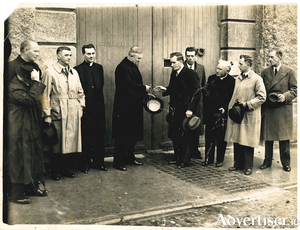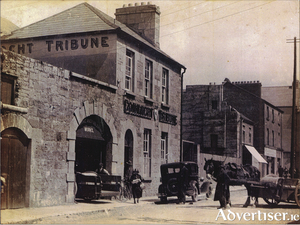Search Results for 'William Smith'
5 results found.
Time to honour a Republican and a woman, say Morrissey bridge name campaigners
Supporters of the Julia Morrissey Bridge campaign gathered at Galway’s new bridge to promote the proposal to name the bridge after Galway’s forgotten 1916 woman leader.
O’Brien’s Bridge

The Parliamentary Gazetteer of Ireland was published in 1845 and stated that, “The old, or west bridge, over the main current of the Galway River, was built in 1342; and till the erection of the new bridge [the Salmon Weir Bridge, built 1819] was the only passage from the eastern districts of the county to the great peninsulated district of Iar-Connaught. In 1558, a gate and tower were erected at its west end; and afterwards, another gate and tower were erected in its centre; but these were long ago entirely demolished. About 42 years ago, the bridge was thoroughly repaired on its north side, and was pronounced by architects to be strong; but it soon experienced the effects of the neglect which are so generally apparent in the town; and in consequence of dilapidated parapets, narrow carriage-way and the utter want of side-pavements and of lights, it was, a few years ago, a rather hazardous means of crossing a deep and impetuous river on a dark night.”
Night of the Big Wind – 1839

In November 1824, the Church Wardens of Castlebar sought proposals from contractors to build a new church. Plans were displayed at the house of the Revd. William Smith.
The handing over of Galway Gaol

Galway City and County gaols were built at the beginning of the 19th century on a large site which took up most of Nuns Island. Construction was conditional on a right of way, the road all around the walls, also being built. James Hardiman, the historian, described it as follows: “The Prison …. Is built in the form of a crescent …. The interior of which is divided into eight wards ….. separated by walls which form so many radii of a circle, and, terminating in the rear of the governor’s house, bringing the whole range within many of his windows, by which means he can, at a single glance, survey the entire.”
Local papers and their role in our history

In 1909 Galway was at a low ebb, the population was just over 3,000, the local economy was in poor shape, the canal and the docks were not being well used commercially, the student population of UCG was 131, there was very little manufacturing, and local politics was still bedevilled by the Parnell split. There were two local newspapers, The Connacht Champion which actively supported William Smith O’Brien MP and often virulently attacked the Irish Parliamentary Party, and The Galway Express which originally supported the conservative unionist viewpoint, but which gradually became more nationalist until its premises were wrecked in 1920 by the Black and Tans.

